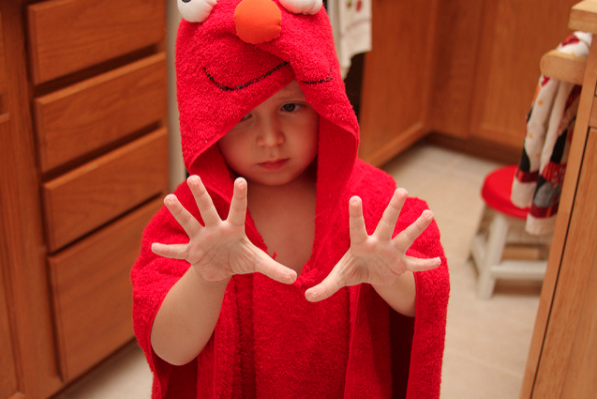
You’ve experienced it before. Maybe you went swimming in the lake with some friends, or perhaps you took a nice bath to relax after a rough day. Maybe you just finished washing your dishes. You take a look down at your hands and you see 10 wrinkly raisins of fingers staring back at you. What happened?
Short answer: It’s your nervous system.
Like most areas of your body, fingers have a layer of skin protecting the muscles and bones that allow them to function. Previously, scientists hypothesized that finger wrinkling was a simple matter of osmosis: when you spend a lot of time in water, your skin starts to absorb the water. It expands, while the layers underneath don’t. To stay attached, it has to wrinkle.
That made sense until 1936 when researchers studying a man with nerve damage in his arms noticed that his fingers didn’t wrinkle when he put his hand in water.
“People who have damage to the nerves to their fingers don't get wrinkled fingers when they leave them in water for a long time, so it’s not a passive skin property – it actually seems to be an active neural response,” said Dr. Tom Smulders, a senior lecturer at Newcastle University in the United Kingdom.
That’s right, your nervous system plays a big role in making your fingers look like dried grapes. The nerves in your fingers are so sensitive that when you keep your hands in water for too long, they trigger a response in your circulatory system, narrowing the blood vessels in your fingers.
“If the blood vessels contract in the fingertips, that means you get less blood volume to the fingertips, and so the insides of the fingertip actually get a bit smaller because there’s less blood in there,” Dr. Smulders said. “The analogy is with a raisin or a prune: if the inside gets smaller, but the skin around it stays the same surface area, then it will start wrinkling up.”
However, according to Dr. Smulders, no one has ever measured the volume of fingers to confirm the theory. Nor does anyone really seem to know why the fingers react this way in water. It could be a response to an electrolyte imbalance in the skin, or perhaps a way the body tries to stop itself from overheating, according to Dr. Damir Omerbasic, a researcher from the Max-Delbrück Center for Molecular Medicine in Berlin, Germany.
In a 2011 study, Dr. Mark Changizi, the director of cognition at 2AI Labs, a research institute in Boise, Idaho, suggested that humans should blame evolution for wrinkly fingers. Perhaps the wrinkles provided a way for humans to get a good grip on objects in wet conditions.
Following the study’s release, both Dr. Smulders and Dr. Omerbasic tested the hypothesis. Their studies had participants move a series of small objects from one dish to another. At different times the objects were dry or wet, and the participants switched between smooth or wrinkled fingers.
Dr. Smulders’ study found that wrinkled fingertips allowed participants to move wet objects more quickly than when they used smooth fingertips, while Dr. Omerbasic’s study didn’t find a significant difference.
“We cannot for sure know that [finger wrinkling] is not an adaptation – we believe it is not,” Dr. Omerbasic said. “We actually believe that finger wrinkles are just kind of a byproduct that happen together with a protective mechanism called heat-induced vasoconstriction, and we don't think that there is any evolutionary advantage – any adaptive advantage – for having finger wrinkles in wet conditions.”
Because they didn’t see a change in participants’ ability to handle wet objects, researchers from Dr. Omerbasic’s study hypothesized that wrinkling isn’t anything special. It simply occurs as the blood vessels narrow, possibly to avoid having the body overheat.
Dr. Changizi said he was displeased with both the Berlin study and the Newcastle study because of the methods the researchers used.
“I didn’t like either study, even the study that came out in favor of [our hypothesis], because both of these studies were looking at grasping small objects with your fingertips,” Dr. Changizi said. “In most conditions it’s not about holding little objects in your fingers when it’s wet … it’s about your body and locomotion.”
In other words, the wrinkling of our fingers and toes allowed our ancestors to climb trees or run around when it got wet–not sort marbles.
Of course, today these traits may not be as relevant. We need our car tires to have good grip on slippery ground more often than we need our toes to wrinkle up to help us run when it rains. If Changizi is correct that our skin wrinkles as the result of evolution, there may come a time when human skin won’t turn into a prune after a long bath. But don’t hold your breath.
“It’s hundreds of thousands of years before you see that kind of difference,” Dr. Changizi said.